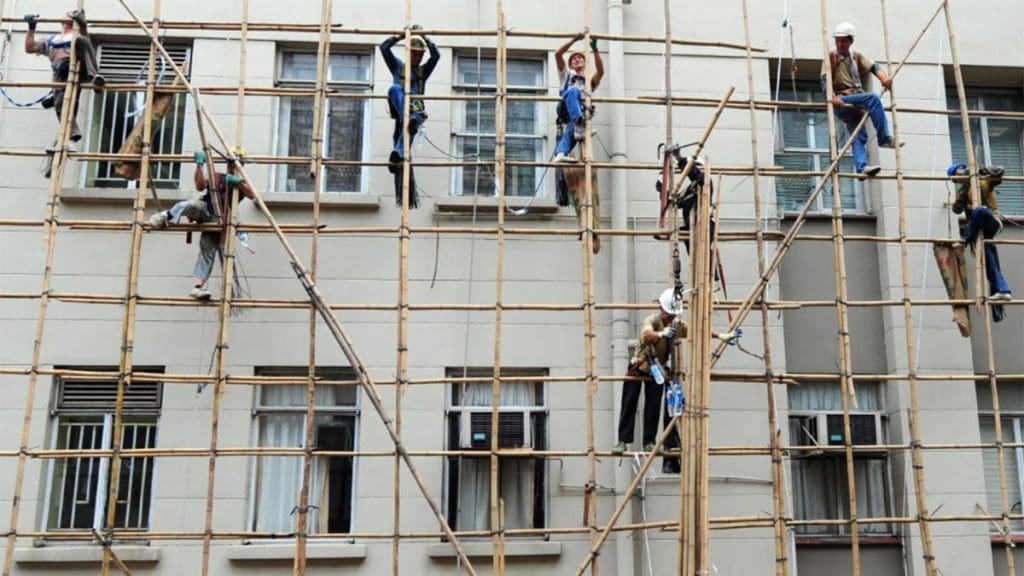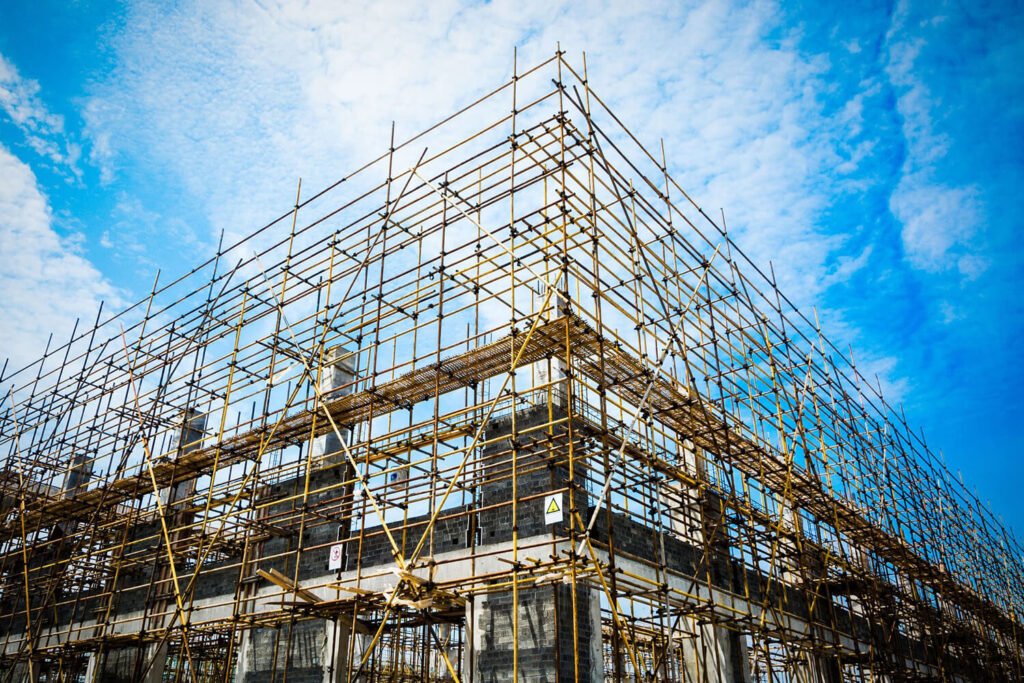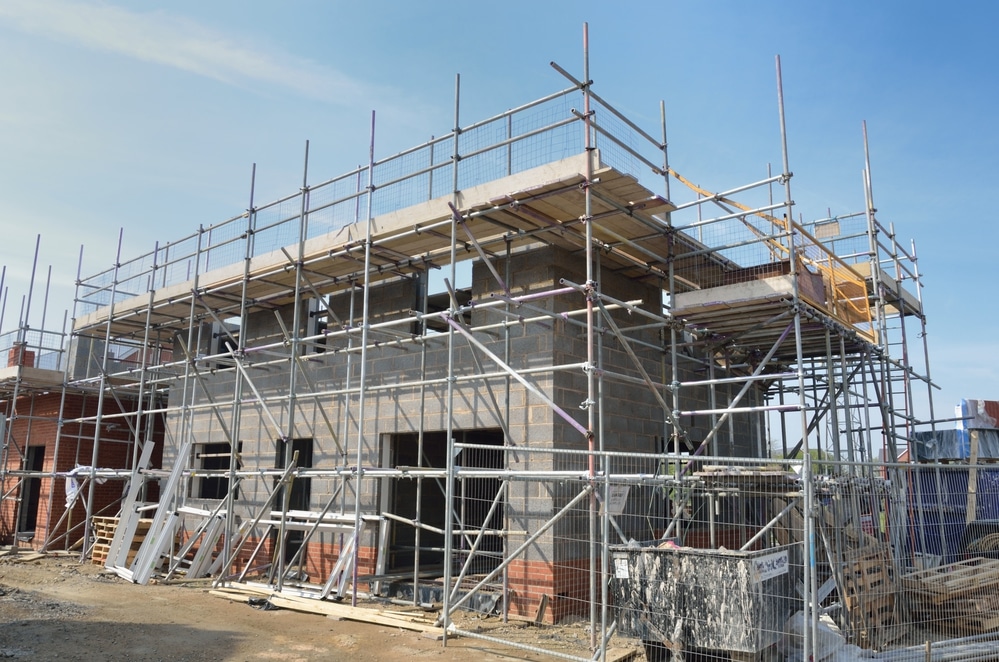Affordable Domestic Scaffolding for Every Home Renovation Project
A Comprehensive Guide to the Essential Attributes of Scaffolding in Modern Building
The landscape of contemporary construction significantly depends on efficient scaffolding systems that focus on performance, safety, and technology. As tasks grow in intricacy, understanding the important functions of scaffolding becomes vital for ensuring employee security and maximizing project timelines. This overview discovers different kinds of scaffolding, highlights vital safety features, and takes a look at product improvements that add to efficiency and sustainability. However, the ramifications of these aspects expand much past mere construction methods, triggering a closer consider exactly how they affect general task success and employee health.
Kinds of Scaffolding
Although scaffolding systems can vary widely in design and application, they usually fall right into a number of distinct groups that deal with various building needs - Scaffolding. One of the most typical types include supported scaffolding, suspended scaffolding, and rolling scaffolding
Sustained scaffolding contains systems sustained by a structure of poles, which offer a elevated and secure working surface. This type is generally used for tasks that require significant elevation, such as bricklaying or external painting.
Suspended scaffolding, alternatively, is utilized for jobs calling for access to high altitudes, such as cleaning or repairing structure exteriors. This system hangs from a rooftop or an additional framework, permitting employees to lower or elevate the system as needed.
Rolling scaffolding features wheels that enable very easy wheelchair throughout a job site. It is specifically useful for tasks that call for frequent relocation, such as interior operate in big spaces.
Each sort of scaffolding is made with details applications in mind, guaranteeing that building tasks can be performed efficiently and successfully. Recognizing these groups is important for picking the appropriate scaffolding system to meet both project requirements and site problems.
Trick Safety And Security Attributes
Safety and security is vital in scaffolding systems, as the possible dangers connected with operating at elevations can lead to major accidents if not correctly handled. Trick safety features are crucial to guarantee the wellness of workers and the integrity of the building website.
Most importantly, guardrails are important. These barriers provide a physical safeguard versus falls, dramatically decreasing the risk of significant injuries. In addition, toe boards are commonly utilized to avoid devices and materials from diminishing the scaffold, shielding workers below.
Another crucial element is making use of non-slip surface areas on systems. This feature boosts hold, especially in unfavorable weather, thereby lessening the possibility of drops and slides. Moreover, access ladders need to be securely placed to help with secure entry and leave from the scaffold.
Regular examinations and maintenance of scaffolding systems are likewise important. These assessments ensure that all elements remain in good problem and functioning properly, resolving any wear or damage without delay.
Finally, correct training for all personnel associated with scaffolding procedures is important to make certain that they understand security methods and can determine possible hazards. Scaffolding. Collectively, these functions produce a safer working atmosphere and dramatically mitigate risks related to scaffolding
Product Developments
Improvements in product scientific research have considerably influenced the scaffolding industry, enhancing both safety and security and performance in modern-day building. The intro of high-strength steel and aluminum alloys has revolutionized typical scaffolding systems.
In addition, ingenious composite products, such as fiberglass-reinforced plastics, have actually emerged as viable choices. These materials are immune to deterioration and environmental degradation, hence prolonging the life expectancy of scaffolding systems, especially in harsh climate conditions. Using such products adds to reduce upkeep expenses and guarantees regular performance gradually.


Design Factors To Consider
Thinking about the complexities of contemporary building and construction projects, efficient scaffolding layout is vital to making sure both capability and safety. Design factors to consider need to include various factors, consisting of load ability, height, and the certain demands of the construction website. Each project offers special difficulties, necessitating an adaptable approach to scaffolding systems that can adjust to varying problems.
Architectural stability is vital; consequently, designers have to determine the lots that the scaffolding will sustain, including workers, products, and tools. The selection of materials plays a crucial function in guaranteeing the scaffolding can hold up against these loads while staying light-weight and resilient. Furthermore, the layout must enable for very easy gain access to and egress, facilitating the smooth motion of employees and products.
Security attributes, such as guardrails and linked here non-slip surfaces, ought to be integrated to decrease dangers of crashes. Additionally, the design needs to take into consideration the surrounding environment, consisting of adjacent structures and prospective dangers. By dealing with these design considerations, construction firms can boost the performance of scaffolding systems and advertise a more secure working setting, inevitably adding to the general success of the job.
Maintenance and Evaluations
The effectiveness of scaffolding systems extends beyond preliminary design and implementation; recurring upkeep and normal inspections are vital to guaranteeing their proceeded performance and safety throughout the period of a task. Routine evaluations need to be carried out by qualified personnel to recognize any kind of indicators of wear, damage, or instability that can jeopardize the integrity of the scaffolding.
Maintenance protocols ought to include regular checks of structural components, such as structures, slabs, and installations, making sure that all elements continue to be safe and free from corrosion or various other wear and tear. Furthermore, the performance of safety functions, such as guardrails and toe boards, must be analyzed to guarantee conformity with security regulations.
Paperwork of all Find Out More inspections and upkeep tasks is essential for accountability and regulative compliance. A methodical strategy to record-keeping not only help in tracking the condition of the scaffolding however additionally offers needed proof in case of a case.
Ultimately, establishing a thorough maintenance and examination routine will significantly decrease the danger of crashes and enhance the general safety of the building and construction website. By prioritizing these practices, building and construction managers can guard employees and copyright the job's integrity.

Verdict
In verdict, the necessary functions of scaffolding in contemporary construction include a variety of vital aspects, including varied types, crucial security mechanisms, product technologies, and thoughtful style considerations. Emphasizing safety via guardrails and non-slip surface areas, alongside innovations in products scaffolding requirements like high-strength steel, enhances both performance and sustainability. Moreover, regular upkeep and evaluations are vital for making sure structural honesty and security on building and construction websites, ultimately assisting in effective project implementation and promoting the health of workers.
The landscape of modern-day construction significantly relies on efficient scaffolding systems that prioritize safety and security, development, and performance.Innovations in material science have actually considerably affected the scaffolding sector, boosting both safety and security and efficiency in contemporary building. On the whole, these material technologies not just improve the efficiency and safety and security of scaffolding systems yet additionally align with the industry's push in the direction of sustainability, as lots of modern-day products are created to be extra eco friendly.
Considering the complexities of modern construction projects, reliable scaffolding design is vital to guaranteeing both performance and security.In conclusion, the important attributes of scaffolding in contemporary building and construction include an array of critical components, including diverse types, key security systems, material developments, and thoughtful design factors to consider.